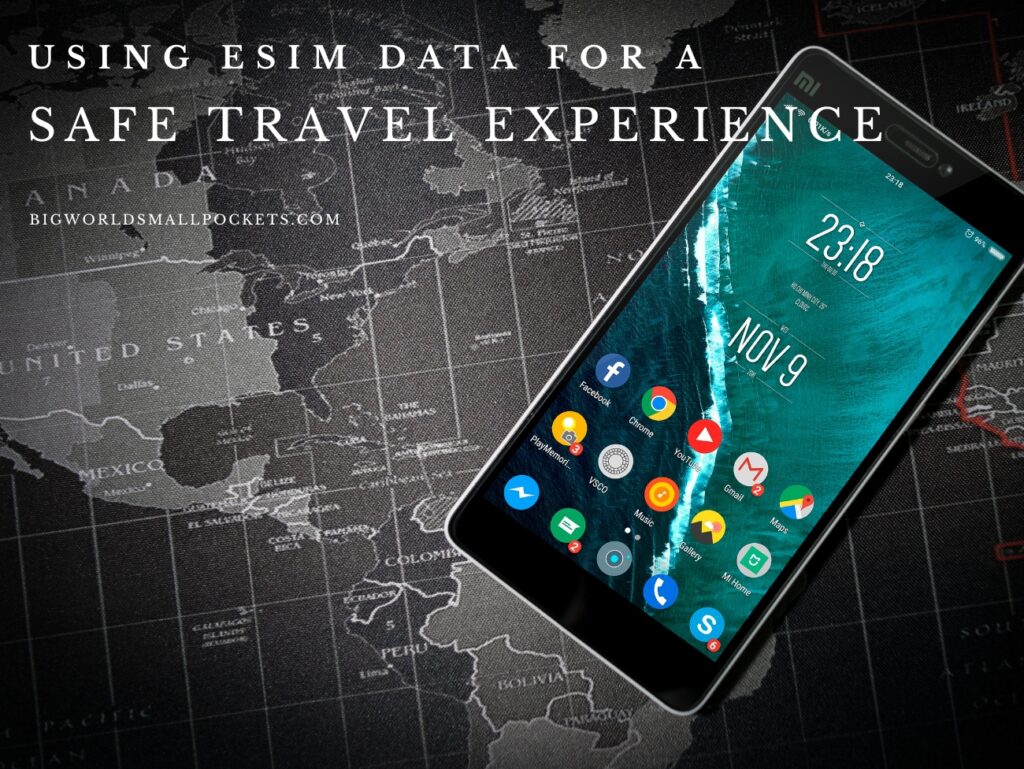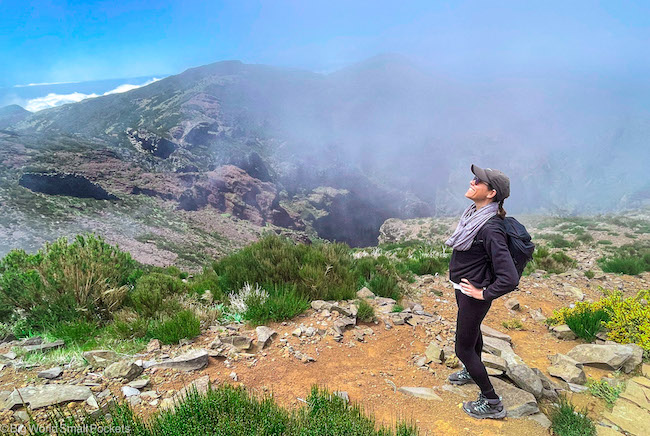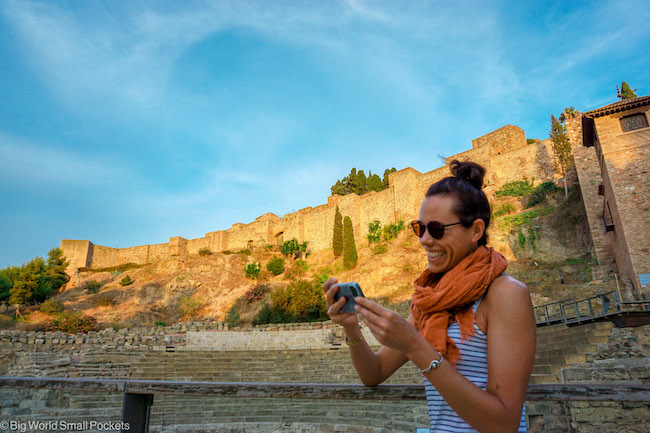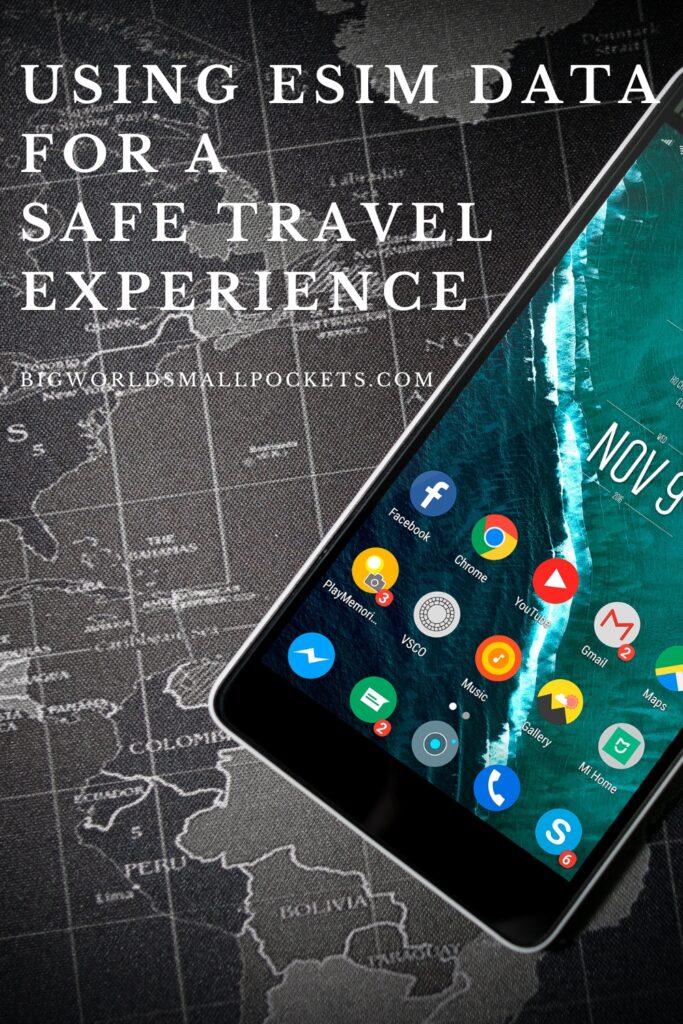Have you ever wondered how to ensure you have an amazing trip, but also have a safe travel experience?
If you have, you’re not alone!
Travel has always been meant to challenge people to head out on new adventures, seek out new experiences and live life to its fullest.
But most of us want to be sure we’re doing all of that safely… and sustainably.
Safety during travel is of particular concern to solo travellers, first-time travellers, and a huge variety of folks, for a huge variety of reasons. The bottom line is we want to have fun, and ensure we can do so without having to worry.
Staying connected is one of the best ways of staying safe, as it allows you to connect to a variety of tools and resources that will help keep you safe.
Whether it be a way to contact help, to message a close contact, or to find your way when you’re lost.
Almost all of these will require a data connection.
And finding that data connection can sometimes prove more challenging than not, even with public Wi-Fi available in many large cities around the world.
Having a data source like prepaid eSIM data (I recommend aloSIM) is an excellent way to tide you over when that public network might not, and it’ll ensure you have a safe travel experience by powering your phone with data, which will be key to staying safe.
Related Posts
- Top 6 Jobs for Travelling the World
- How to Get a Good Night’s Sleep When Travelling
- 7 Great Reasons Why You Should Work & Travel
This post was sponsored by aloSIM but, as always, all views are my own.
This page contains affiliate links meaning Big World Small Pockets may receive a small commission on any purchases at no extra cost to you.
How to Have a Safe Travel Experience
When you stay connected with eSIM data, you’re able to access a number of tools that you can use to stay safe.
Let’s unpack my biggest tips on how to have a safe travel experience, and how having a steady data connection is key to ensuring your safety along the way.
#1 Have a Safe Travel Experience by Using Safe Travel Apps
There are a number of apps that are tailored towards travel usage, whether they connect you with info on your destination, help you communicate with key contacts in times of need or keep you alerted to any local emergencies or big events you should be aware of.
1st recommended safety app: GeoSure
Before you head to a destination, you can use GeoSure to get informed on important information, and key safety statistics and crime rates, in a destination you are heading to soon, or considering visiting.
And once you’ve arrived, you can check this app (using your eSIM data) to refresh your knowledge on what you should be on the lookout for in each destination, as well as to check real-time information reports and travel alerts.
2nd recommended safety app: bSafe
Among the best apps to have in emergency situations.
Powered by your eSIM data, this app allows you to designate contacts who will be alerted in emergencies, and receive live video and audio from your phone’s camera once you’ve spoken your selected SOS activation phrase.
From there, bSafe will cause your phone to sound loud alarms, while recording and sending up to 5 minutes of live video and audio to your selected contacts so they can call for help on your behalf.
3rd recommended safety app: Sitata
This app will keep you up to date on local news and emergencies – following and gathering local news updates so you can learn more details as events unfold.
Available in 200+ countries, you can use Sitata basically anywhere.
And with other features including a community section, where others travelling can chat about their first-hand experiences with the local events you’re following.
This can help inform your approach to navigating them yourself.
#2 Use Google Maps (and save your maps for later)
Google Maps may not strike you as a safe travel app at first, but it’s one of the most robust.
Here’s a little more information on why so many people recommend using it.
At its most basic level, this app will help you navigate your new destination, whether that be by viewing live maps, or manually searching for directions.
It can toggle between different modes of travel, whether you are driving or walking. And on top of this, it’ll also pull public transit information (with live times and updates) to help you get where you’re going.
There are other lesser-known features within Google Maps as well.
Some of these include measuring the distance between several points (if you’re kilometre counting, or tracking the distance you walk in a day), or even remembering where you parked your car (VERY useful in a brand-new city).
And here’s another tip on a Google Maps feature that will also conserve your eSIM data (which you can easily top up if you ever run out).
You can download maps and use them offline, which not only saves your data, but gives you a handy map to refer to whenever you need a quick refresh (without having to re-enter any info).
#3: Have a Safe Travel Experience via Ridesharing
It’s hard to overstate how useful Uber and other ride-sharing apps can be when you travel, especially when you need to make a quick exit.
And when they’re powered by a steady eSIM data connection, you can use them knowing your signal (and ride) won’t be lost.
Ride-sharing apps like Uber, Bolt and Lyft also share information on drivers, including what passengers have rated them, so you can feel safer about the driver you choose.
These apps often feature live maps showing where your rideshare is located, and feature an option for you to choose a pick up spot that works for you.
This pick-up spot selection feature is handy, especially as it lets you choose a spot you feel safe in (for example, you can wait in a lobby and exit as they are pulling up).
Being able to select where they pick you up from gives you more control and comfort over your ride.
With Uber located in over 10,000 cities, and Lyft in nearly 700 cities across Canada and the U.S. (as of when this article was published), you can rely on ridesharing as a mode of transportation (especially when powered by your eSIM data).
Or, use it as a great backup option if your chosen transportation method falls through.
Another benefit of rideshare apps is fare regulation, and secure transactions.
While taxis can be great, taxi rides in foreign countries can be dodgy for tourists who aren’t careful (or even ones who are!).
Rideshare apps offer standard fares and process payments within the app, making your experience a much more secure one.
Learn more about ridesharing in this post I wrote.
Tell People Where and When you Travel
Even while having a safe travel app like bSafe in use, another surefire way to increase your safety on any trip, especially when travelling solo, is to keep others in the loop.
And I don’t mean by posting about it on social media (which is the opposite of safe)!
Whether you have close friends or family that you are keeping up to date with, make it a habit to regularly update your close contacts with where you’re travelling, when you are leaving a destination and when you’ll arrive at your next one.
You could even create a travel itinerary (perhaps even in a shared online location) that these close contacts have to refer to.
But if you do, remember to update the document or your contacts when any changes occur, so they are truly up to date.
It can also be a good idea to tell your close contacts back home about the people you’ve met along the way, both to share your experience but also so they are aware of the people you are with on your travels.
It’s not to say that every person you meet is dangerous, but that other people knowing who you are with increases your safety in general.
Final Thoughts
There are so many ways to stay safe during your travels.
The important thing is to pick a few, and stick to them as best you can.
Checking in with close contacts, using a safe travel app (or three), using Google Maps and considering using ride-sharing apps are all ways to increase your safety on the go.
And they are all made exponentially easier when powered by a steady (albeit affordable) eSIM data connection.
And trust me, these safety tips might feel or even sound like a chore and, well, maybe they are a bit of one.
But believe me when I say you’ll get used to them, and they’ll quickly become just another step of your travel routine.
Annnnd, they’ll save you from stressing out if you do end up in a sticky situation too!
I hope you have the best travel experience ever, and know this trip will be one that’ll change your life in some way.
So do what you can to enjoy it to its fullest by staying safe, and ensuring you stay connected with eSIM data.
And if you’re wondering where to get it from, I recommend aloSIM.
Happy travels!
PIN IT TO PINTEREST!






